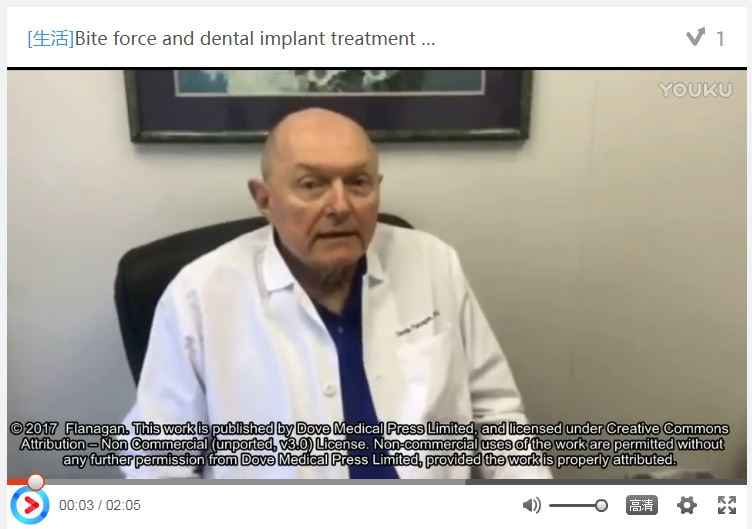9 0 5 7 8
论文已发表
注册即可获取德孚的最新动态
IF 收录期刊
- 2.6 Breast Cancer (Dove Med Press)
- 3.9 Clin Epidemiol
- 3.3 Cancer Manag Res
- 3.9 Infect Drug Resist
- 3.6 Clin Interv Aging
- 4.8 Drug Des Dev Ther
- 2.8 Int J Chronic Obstr
- 8.0 Int J Nanomed
- 2.3 Int J Women's Health
- 3.2 Neuropsych Dis Treat
- 4.0 OncoTargets Ther
- 2.2 Patient Prefer Adher
- 2.8 Ther Clin Risk Manag
- 2.7 J Pain Res
- 3.3 Diabet Metab Synd Ob
- 4.3 Psychol Res Behav Ma
- 3.4 Nat Sci Sleep
- 1.9 Pharmgenomics Pers Med
- 3.5 Risk Manag Healthc Policy
- 4.5 J Inflamm Res
- 2.3 Int J Gen Med
- 4.1 J Hepatocell Carcinoma
- 3.2 J Asthma Allergy
- 2.3 Clin Cosmet Investig Dermatol
- 3.3 J Multidiscip Healthc

Bite force and dental implant treatment: a short review
Authors Flanagan D
Received 15 December 2016
Accepted for publication 8 April 2017
Published 27 June 2017 Volume 2017:10 Pages 141—148
DOI https://doi.org/10.2147/MDER.S130314
Checked for plagiarism Yes
Review by Single-blind
Peer reviewers approved by Dr Akshita Wason
Peer reviewer comments 3
Editor who approved publication: Dr Scott Fraser
Abstract: Dental implants are placed endosseously, and the bone is the ultimate
bearer of the occlusal load. Patients are not uniform in the maximum bite force
they can generate. The occlusal biting load in the posterior jaw is usually
about three times of that found in the anterior. It is possible for supporting
implants to be overloaded by the patients’ biting force, resulting in bone loss
and failure of the fixture. Bite force measurement may be an important
parameter when planning dental implant treatment. Some patients can generate
extreme biting loads that may cause a luxation of the fixture and subsequent
loss of osseointegration. A patient with low biting force may be able to have a
successful long-term outcome even with poor anatomical bone qualities. Patients
with a high bite force capability may have an increased risk for late component
fracture or implant failure. There is no correlation of any bite force value
that would indicate any overload of a given implant in a given osseous site.
Nonetheless, after bite force measurement, a qualitative judgement may be made
by the clinician for the selection of an implant diameter and length and
prosthetic design.
Keywords: occlusal load, newtons, oral function,
force, sensor, software
摘要视频链接:Bite force and
dental implant treatment
